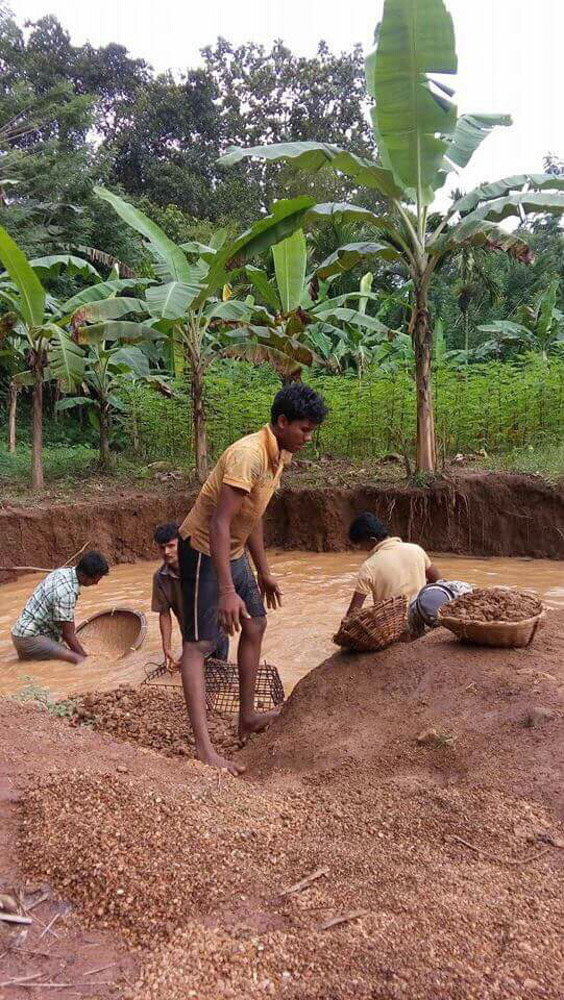
What is the Theory of Intersectionality? Bario Neal Hears from Diandra Marizet of Nonprofit Organization Intersectional Environmentalist
'Dismantling racism' and being 'environmentally conscious' are goals many of us would say we are committed to - but what we may not realize is that there is a crucial relationship between these two causes. Diandra Marizet (@diandramarizet) of the nonprofit organization Intersectional Environmentalist shared some eye opening facts with us recently on the Theory of Intersectionality and why it's critical to be aware of, plus what steps we can take to make our earth, and its people, more respected and respectful.

1. How do you describe the Theory of Intersectionality to someone that's never heard of it?
Intersectionality theory was coined and developed by Kimberlé Crenshaw, who drew inspiration from the Combahee River Collective. This theory helps address prejudice and injustices happening at the intersection of race, gender, and class.
When we look at environmentalism through an intersectional lens, it identifies the ways in which injustices targeting frontline communities and the earth are intertwined. This way, it allows us to truly call for justice for both people and the planet.
2. What are a few easier steps (maybe 2-4 general ideas) people can take toward being more conscious + aware and help dismantle oppression?
At Intersectional Environmentalist, one of our main goals is to shift the narrative of mainstream environmentalism, which has historically left out BIPOC (Black, Indigenous, and People of Color) voices and stories. One of the ways we can be more inclusive and intersectional in our activism is to learn about the true history of environmental justice, highlight BIPOC climate activists, and include these voices in the main movement so we can understand the true impact of the climate crisis.
When we look at environmentalism through an intersectional lens, it identifies the ways in which injustices targeting frontline communities and the earth are intertwined. This way, it allows us to truly call for justice for both people and the planet.
We’re also advocates for accessible education and continued learning. Through our IG lives, researched posts, and partnerships, we want to be able to develop resources that allow all of us to learn more about the intersections of environmentalism and social justice, as allyship and activism is a life time journey. With this knowledge, we can hold companies accountable, advocate for sustainable changes in our own lives, and continue to do the work.
3. What is your desire behind your motto: 'not a moment, but a movement'?
The phrase 'intersectional environmentalism' was trending last year and we hope that it will continue to gain momentum and create real change. In just a year, we’ve seen the community accomplish so much - including one of our interns who petitioned their school to develop a course on intersectional environmentalism, and it worked. The new professor they hired to lead the course is an Indigenous woman from Southern California. This is just one of the many examples we’ve seen. In the future, we hope that environmental justice is at the forefront of the climate movement, not just an extension, and all issues are viewed with an intersectional lens.

4. What is a cause your team is super passionate about right now?
We’re especially excited to start connecting with the IE community in different ways. Behind the scenes, we’re thinking about hosting community events, providing free and accessible education, and finding more ways to practice ‘artivism’. We look forward to connecting with our audience and hope to provide opportunities to build community.
5. We're seeing a trend (hopefully that lasts) toward ethics-based purchase habits, especially from millennials. Do you agree? Or how do you feel consumerism may change?
Definitely! A lot of studies have shown that the younger generations want to support brands that have a mission statement that is supportive of both the people and planet. Corporations have a responsibility to make sure that the products or services they’re creating and selling do not exploit nature and its workers.

6. Why is ethical jewelry or retailers important to the mission of IE?
Transparency throughout the supply chain - from who provides the raw materials, to how employees are treated, to what goes into the final product - is a perfect example of intersectional environmentalism. By looking at how both people and the planet are being affected by production, we can make choices that treat both with respect.
Thank you, Diandra, for sharing all of this with us. Intersectional Environmentalist founder, Leah Thomas, has a book coming out 3/8/22 which we're very much looking forward to. Join us in following @intersectionalenvironmentalist and @greengirlleah to learn more about how to support this important movement!